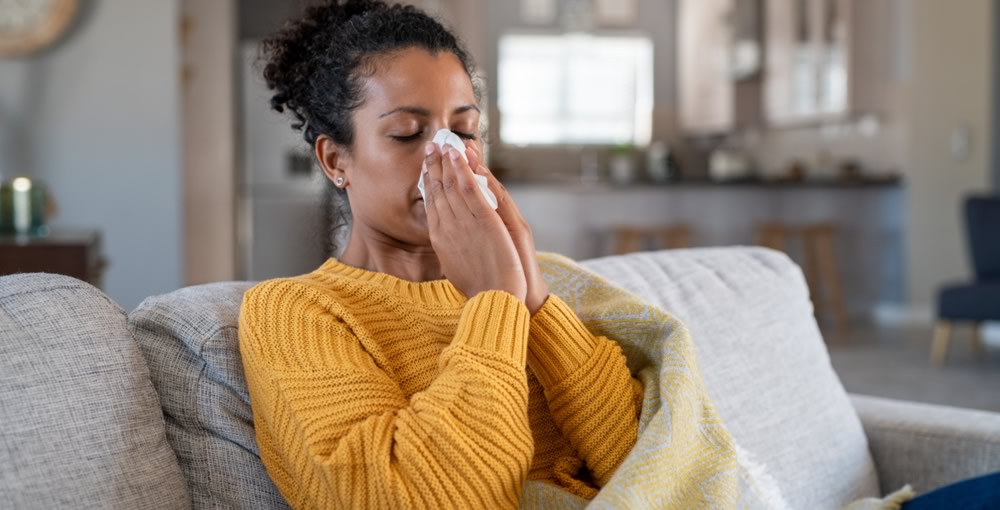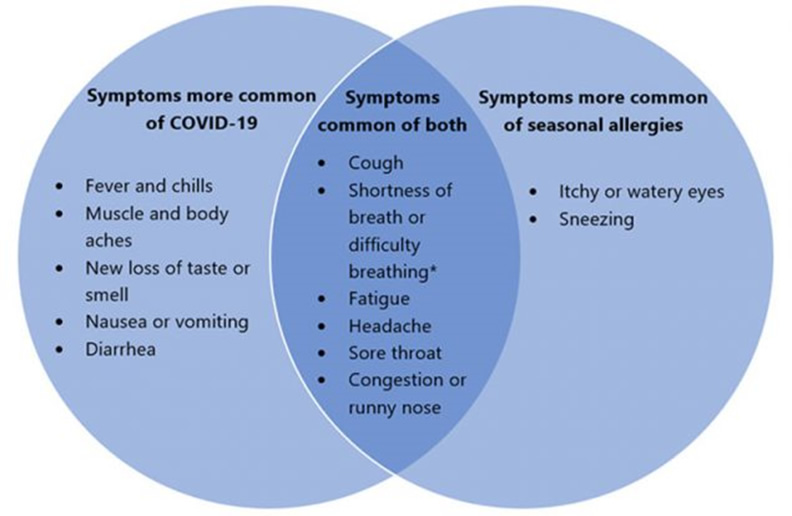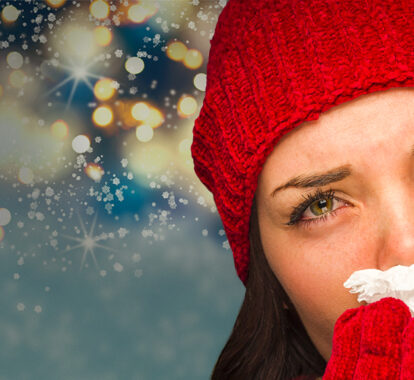Cedar Allergies or COVID-19? How to tell the difference
January 19, 2021

December through February are months when mountain cedar pollen counts are at their peak, and many suffer allergic symptoms as a result. This year as symptoms strike, you may be wondering:
Is it mountain cedar allergies? Is it COVID-19? How can I tell the difference?
The CDC released the following graphic to illustrate the difference in symptoms between seasonal allergies and the coronavirus.

Mountain Cedar Symptoms
Symptoms related to mountain cedar allergies may include itchy, watery eyes, sneezing, and nasal congestion or a runny nose. You may also experience a headache, fatigue, shortness of breath and a sore throat. Often referred to as “mountain cedar fever”, sufferers can experience symptoms when cedar trees release their pollen—any time between November and March.
COVID-19 Symptoms
The symptoms of COVID-19 vary widely and can present as mild or severe any time of the year. Symptoms can include fever, body aches or chills, vomiting or diarrhea. As with mountain cedar fever, COVID-19 also can cause a cough, fatigue, headache, breathing difficulty and nasal congestion. Symptoms may appear 2 – 14 days after exposure to the virus.
Comparing the Two & Taking Precautions
When comparing symptomatic differences between the two illnesses, it is important to note that cedar allergies rarely cause body aches, nausea or an actual fever, although some may feel feverish with chills, hence the term “cedar fever.”
As we move into spring, take precautions to minimize your risk of contracting COVID-19:
- Wear a mask over your nose and mouth when out in public and when around people who do not live in your home, whether you feel or not.
- Keep 6 feet of distance (approximately 2 arm lengths) between yourself and anyone who does not live in your home.
- Avoid large crowds whenever possible to lower your risk of exposure to the virus.
- Wash your hands regularly and use hand sanitizer containing at least 60% alcohol when hand washing is not possible.
To reduce the severity of cedar allergy symptoms:
- Close windows and doors and run your air conditioner to filter the air in your home.
- Limit outdoor activities when pollen counts are high.
- Shower and wash hair daily to remove pollen.
- Wash bedding every week and any clothing worn outside during high pollen counts daily.
If you are experiencing a combination of symptoms and are concerned you may have contracted coronavirus while suffering from cedar fever, schedule a COVID test to determine if you have COVID-19. Register for testing at your nearest Texas MedClinic.




